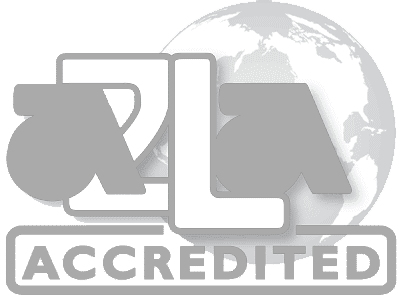ASTM B117, commonly known as the Salt Spray Test, was designed to simulate a saline environment within a laboratory chamber using a defined protocol for salt concentration, temperature, pH, and airflow. This controlled atmosphere allows researchers and manufacturers to monitor how test samples respond to corrosive exposure over time.
The test’s longevity is tied to its ability to generate consistent data under tightly controlled conditions, making it a valuable tool in quality systems and coating process control programs where reliability standards are especially high. In aerospace, where materials face aggressive environments, this comparative framework is essential for qualifying suppliers, validating processes, and monitoring quality.
How the Test Works and What Omega Does Differently
In the ASTM B117 test, samples are placed inside a sealed chamber with a fine mist of saline solution. This mist typically consists of a sodium chloride solution maintained at 4-6% concentration, with regulated temperature, humidity, pH, and airflow.
At Omega, consistent control of test inputs is fundamental. We maintain a standardized 5% sodium chloride solution prepared internally to control salinity and minimize variability. Chamber parameters are closely monitored to ensure test validity across multiple runs.
What Salt Spray Testing Actually Reveals
A common misconception is that the Salt Spray Test directly predicts real-world product lifespan. Results are recorded as hours before defined failure signs appear, but these don’t directly correlate to months or years of service in the field. Environmental conditions in actual use including cyclic humidity, UV radiation, temperature shifts, and pollutants are significantly more complex than those in the test chamber.
The real value of ASTM B117 lies in comparative assessment. It identifies differences between coating processes, detects early signs of surface treatment failure, and monitors consistency across manufacturing lots. Two coated fasteners may fail at different times in salt spray but perform identically in application, highlighting the test’s purpose as comparative evaluation, not field simulation.
Appropriate Applications
Salt spray testing is particularly well suited for evaluating plated finishes, material supplier changes, and surface treatments for corrosion resistance. It helps validate coating process stability as part of broader quality assurance programs.
In industries with rigorous standards like aerospace, salt spray results work alongside other analytical methods. As a Nadcap and ISO accredited laboratory, Omega helps customers identify the appropriate testing strategy based on application and requirements.
Conclusion
When interpreted correctly, ASTM B117 serves as an important tool in coating process control, supplier qualification, and root cause analysis. By providing repeatable data tracked over time, it helps organizations make data-driven decisions about materials, vendors, and treatments. At Omega, we apply this test as part of a broader quality assurance framework such as Hydrogen Embrittlement to support your reliability goals with scientifically grounded, repeatable results.


